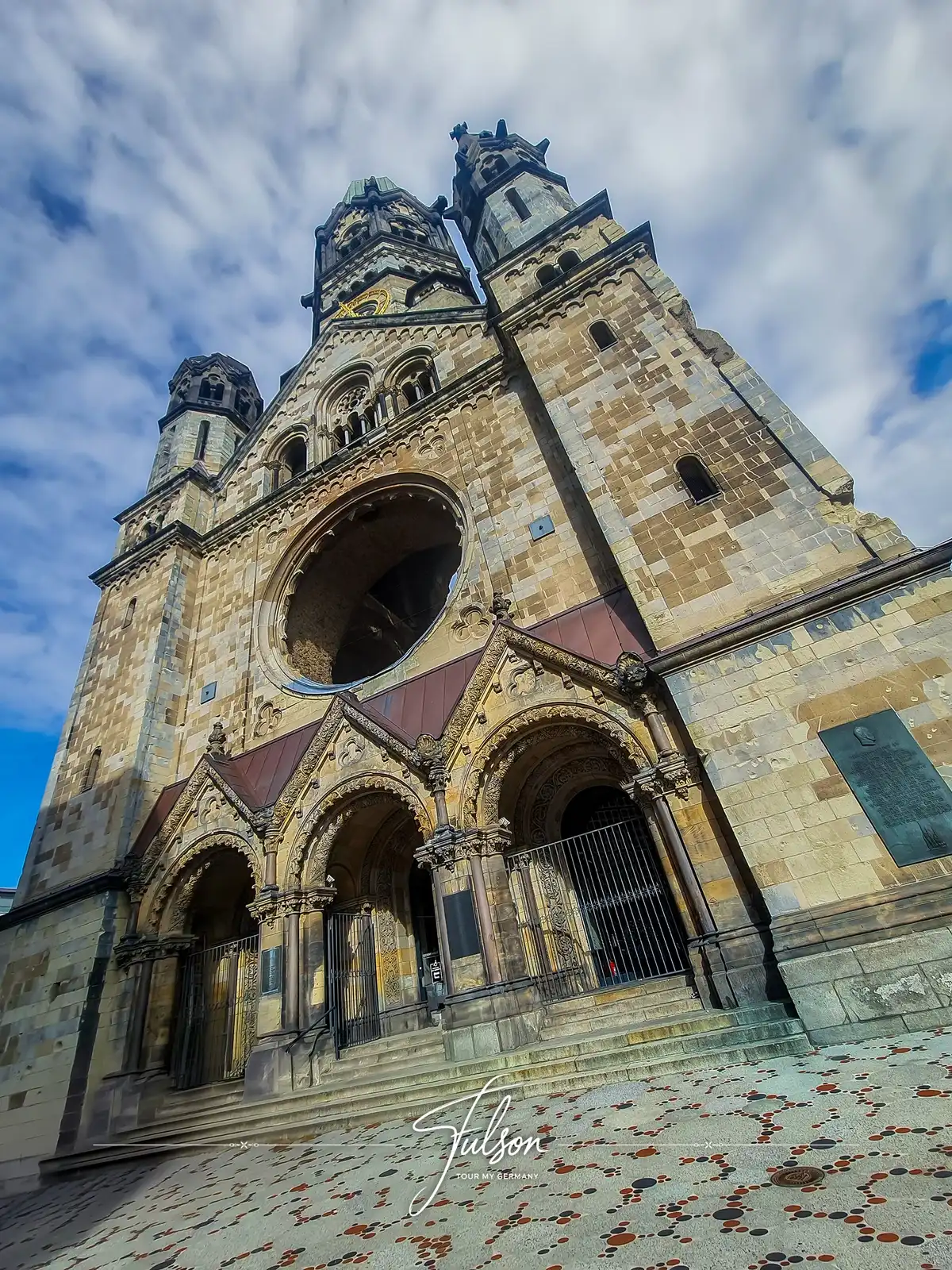- Home
- Top German Cities To Visit
- Berlin Photo Gallery
- Kaiser Wilhelm Memorial Church
Berlin’s Kaiser Wilhelm Memorial Church: A Symbol of Peace
By: Eran Fulson / Traveler & Blogger / After 15+ years of travel across North America and Europe, I now help travelers experience Germany beyond the guidebooks with firsthand tips and cultural insights.
About the Photo
Every angle reveals the hauntingly war-damaged facade of Kaiser Wilhelm Memorial Church. While I took many photos around the church, it was the empty space where a circular stained-glass feature once danced in the light that I found the most captivating. Alongside the countless impressions left by bullets, the word 'poignant' doesn't even come close.
Located in Breitscheidplatz, this Neo-Romanesque church, built in 1895, was heavily bombed during World War II. Instead of rebuilding it completely, the ruins were left as a stark reminder of the war’s devastation, making it one of Berlin’s most moving landmarks.
The modern octagonal church hall, built beside the ruins, features stunning blue stained glass windows, creating a powerful contrast between destruction and hope.
Historical Significance
- Originally built in 1895 to honor Kaiser Wilhelm I, the first German emperor.
- Bombed during World War II (1943), leaving only part of the main spire standing.
- Instead of demolition, it was preserved as a war memorial, symbolizing Berlin’s resilience and commitment to peace.
- The new church hall and bell tower, designed by Egon Eiermann, were completed in 1963, creating a striking mix of old and modern architecture.
How to Visit Kaiser Wilhelm Memorial Church
- Location: Breitscheidplatz, Berlin (near Kurfürstendamm)
- Opening Hours: Typically open daily, 9 AM – 6 PM
- Closest Transport: U-Bahn: Kurfürstendamm / Zoologischer Garten
- Entry Fee: Free (donations welcome)
Tip: Don't hesitate to visit inside the church to see the amazing mosaic ceiling, war memorial exhibits, and the famous stained-glass windows.
Want More Unique Places Near Berlin?
Berlin’s churches and cathedrals offer a glimpse into its rich architectural and cultural heritage. The Berlin Cathedral impresses with its grand dome and ornate interior, while the Kaiser Wilhelm Memorial Church stands as a haunting reminder of wartime destruction. These are only a few of the many amazing places in Berlin waiting to be explored—want to see more?
Can you go inside the Kaiser Wilhelm Memorial Church?
Can you go inside the Kaiser Wilhelm Memorial Church?
Indeed you can. The ruined spire is closed, but the main entrance and nave are open. Visitors can also visit the modern church right next door, which features stunning blue stained-glass windows and a small memorial exhibit showcasing wartime photos and relics.
What is the meaning behind the modern blue church next to the ruins?
What is the meaning behind the modern blue church next to the ruins?
The modern church, built in 1963, was designed to symbolize peace and the rebirth of Germany. 20,000 panes of stained glass were shattered and used to make up the current walls—representing a country shattered in 1945 and pieced back together. Its hexagonal shape and deep blue stained glass create a peaceful, almost celestial atmosphere in stark contrast to the war damage next door.

